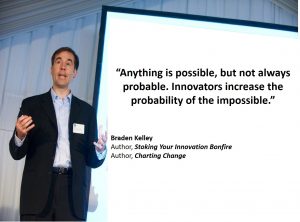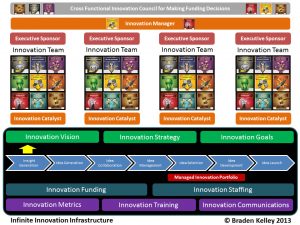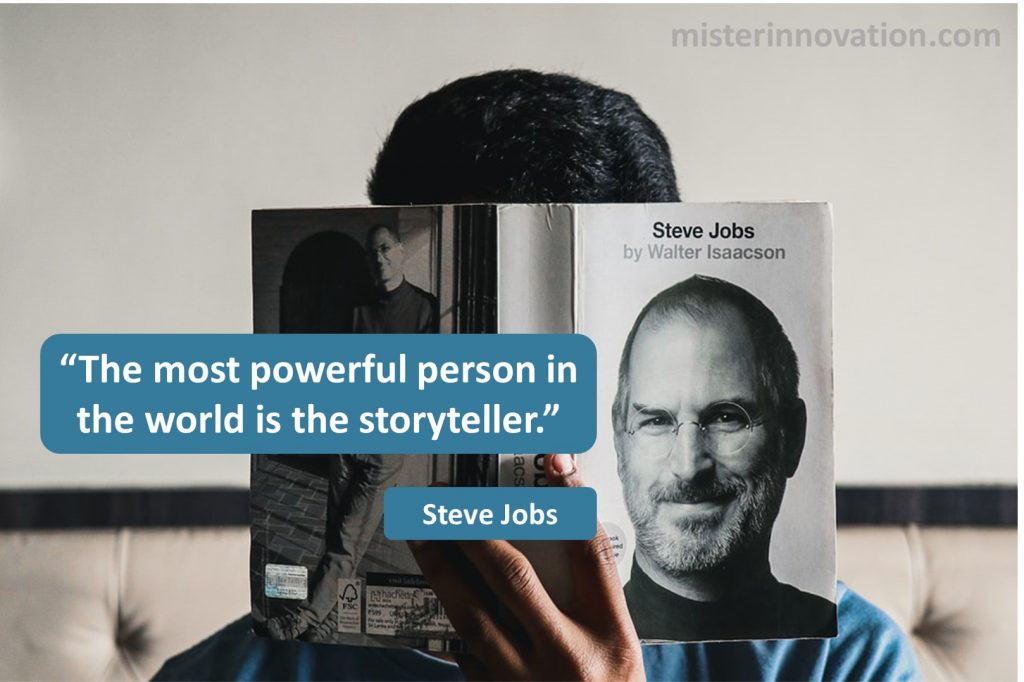How convergence and creative collisions fuel invention

GUEST POST from John Bessant
It was the Covid lockdown that did it. Got me into compulsive listening. As my physical world contracted so I spent more and more time taking voyages inside my head, carried along by music. These days the choice of vessels in my harbor is impressive; I can embark on a whole series of different journeys depending on my mood — jazz, classical, soft folky reminiscence or driving angry rock. But whatever the journey there’s a pretty good chance a guitar will feature somewhere in the mix.
(Confession; I’m a guitar player, have been since I was twelve years old and managed to persuade my parents to let me trade the trumpet I was learning as part of the school orchestra for a six string I’d seen in a shop window).
Even allowing for my bias and your many different musical tastes, you’d probably agree that taking the guitar out of our aural landscape would leave it a poorer place
And it would certainly be a commercially poorer one as well — the market for guitars is booming. It’s currently worth around half a billion dollars and is estimated to grow steadily. Covid-19 was an important sales agent, nudging millions of people to try and fulfill their dreams of converting air guitar playing to the real thing. Fender, one of the biggest names in the industry, had the best sales of its 80 year history during 2020 while James Curleigh, CEO of market leader Gibson, commented that during that year “we literally couldn’t deliver enough. Everything we were making, we could sell!”
But how did the guitar get here? And what role did innovation play in the process?
It’s an instrument with a long history — in fact if you take the idea of stretching strings across some kind of frame and letting the vibrations conjure sounds then we’re back at least three thousand years. There’s a stone carving of a Hittite musician entertaining at a Babylonian party in the Ancient Orient Museum in Istanbul and what he’s playing looks suspiciously close to being a guitar. It clearly didn’t take long for others to catch on the concept of the ‘chordophone’ (to give the technical term for a device which generates sound in this fashion). The Greeks and Romans had their harps and lyres, the Egyptians adding the lute, originally developed in Mesopotamia. And the Moors of north Africa have the oudh, an instrument with a lute-like body and a long neck, probably based on a dried gourd and later fashioned of wood. As it journeyed across to Spain it morphed into what we’d recognize today, a multi-stringed wooden necked device. Encyclopaedia Britannica has the origins of the Spanish guitar as something emerging in the 16th century, deriving from the guitarra latina, a late-medieval instrument with a waisted body and four strings.
Along with the lute, mandolin and other derivatives of the plucked instrument variety it became a widely-played instrument over the next four hundred years. Its popularity came partly from its versatility — it could sit center stage in an orchestral concerto but it could also accompany a lone balladeer or form the centerpiece of a fiery flamenco stomp. And partly from its portability — it was the ideal traveling instrument for the itinerant musician. You could find it in taverns and town squares, concert halls and at court and it spread far and wide, migrating from Europe with the early settlers to the emerging New World.
From the innovation point of view the guitar followed a classic pattern — plenty of experimentation with materials, number of strings, neck length and a host of other parameters in search of the right balance of sound and functionality. And then the emergence of a ‘dominant design’, the configuration which set the pattern, laid down the roadway along which the development of the instrument would travel in an extended period of continuous improvement. Most sources agree it was the Spanish guitar builder Antonio Torres Jurado who did this in 1850 with his invention of the fan-braced design. Bracing the hollow body with struts of wood meant it didn’t keep collapsing in on itself because of the tension in the strings and you could build a big enough body to give you the balance of tone, projection and volume which players required.
But by the end of the 19th century the guitar had come up against an increasingly frustrating limit. It wasn’t loud enough. You could have the sweetest, most lyrical tone but if you were trying to make yourself heard amongst the dance bands which emerged as the twentieth century dawned you had a problem. Innovation, of course, thrives on these conditions and a whole new breed of entrepreneurs began experimenting to try to make louder guitar. They explored many routes — making the whole instrument bigger (but more cumbersome), changing materials (like the steel guitars pioneered by the National company), and playing around with alternative sound amplification principles (like the resonator cone, a kind of dustbin-lid built into the guitar top which vibrates like a speaker and replaces the simple sound hole of the guitar).
This last was particularly embraced by the Dopraya Brothers, Slovakian immigrants to the USA who set up the Dobro company and gave their name to the guitar variant whose haunting sound instantly conjures the wide prairie landscape with its rolling tumbleweed in a thousand films.
Plenty of innovation — but no real breakthrough, nothing radical enough to bring a step change in performance. Until entrepreneurs began to borrow ideas from different industries and to import alternative technologies. As Keith Richards of the Rolling Stones expertly explained in a BBC interview looking at the history of the electric guitar, ‘all they did was put a phone in it….’ Then, after a trademark raspy guffaw, he added “But it was the right phone at the right time!”
Electronics in the early twentieth century had already given us the telephone, the radio and the gramophone and it had become clear that converting sound waves into electrical impulses and then reversing the process offered opportunities for amplifying instruments like the guitar. Patents from around 1910 reinforce Richards’ analysis; people were putting telephone transmitters inside violins and banjos. By the 1920s hobbyists used the (by then widely available) carbon button microphones from telephones, attaching them to the bridge of their instruments. Unfortunately these had a weak signal and as you increased the sensitivity to try to make it louder the microphone picked up other sounds and generated the unpleasant squeal of feedback.
The breakthrough came in 1931 when George Beauchamp designed a one piece instrument, cast in metal and resembling more a frying pan rather than a guitar. Harry Watson of the National Company takes the credit for having built the design which qualifies as the world’s first electric guitar. The key innovation was the use of a device to convert the instrument’s vibrations into electrical signals which could then be amplified — an arrangement of coils of wire wrapped around a metal core and designed to ‘pick up’ the signal. The concept of the pickup belongs to Watson’s friend Arnold Rickenbacker; the idea worked and in 1932 the two of them formed the Rickenbacker company and in 1937 they were awarded a patent.
That breakthrough fired the starting pistol for another innovation race with established manufacturers rushing to bring imitations to market and entrepreneurs looking to exploit the new possibilities in new (and hopefully better) designs. There was plenty of innovation space to play in. Not least dealing with the main limitation of the frying pan idea which was that it was a lap steel guitar, designed to be played horizontally with the instrument resting on the knees. Whilst the ‘Hawaiian sound’ associated with such an instrument was popular it had its limits; Rickenbacker quickly came up with their ‘electro-Spanish model B’ which was designed to be played upright with a strap — the instrument we know and love today.
Some sought to move the new idea to scale through celebrity endorsement. The Gibson company was one of the biggest players in the rapidly-growing musical instrument industry; they launched their Electro-Spanish 150 with the backing of the celebrated jazz guitarist Charlie Christian and a price tag of $150 trying to create a Model T Ford machine.
There was plenty of pent-up demand in the market; with the expansion of the dance band era musicians needed to play louder. But the limits of the design were still there — even if you replaced the sound hole with f-holes or did away with it altogether you still had the problem of sound waves bouncing around inside a hollow-bodied instrument and generating unwanted feedback.
Enter a user innovator, one Les Paul. Already a guitar player with a big following on the country and western circuit he was also a tinkerer. And in 1940 he came up with a solution to the feedback problem — why not dispense with the hollow body altogether and make the guitar solid? He built the Log — a wooden post with a pickup attached along which he stretched the strings. Recognising that he might have trouble pitching his new design he disguised it by gluing two halves of an old Epiphone guitar to the wooden post to give it the familiar guitar shape. This was simply a cosmetic addition to reduce the shock factor; in terms of the sound it made no contribution whatever.
In classic user innovator style he wasn’t particularly interested in producing and marketing the device himself — he had plenty to do as a performer. So he took it to the Gibson company, reasoning that with their history they might be interested in a radical innovation like this. Gibson had built their success on (and took their name from) the ideas of an eccentric mandolin maker who revolutionised the design of that instrument in 1910, doing away with the round bellied Neapolitan model and replacing it with the flat-backed variety. Unfortunately (for them as it later turned out) their response was decidedly lukewarm and so Les shelved his project.
Innovation is often like a soup; market needs and enabling technologies being stirred together by various entrepreneurs and coming slowly to the boil. As it reaches the right temperature so a breakthrough idea bubbles to the surface in two or three places simultaneously. So it wasn’t entirely surprising that in another part of the country someone else was playing with a similar idea to Les Paul.
This one was taking shape in the workshop of Paul Bigsby, an engineer with a passion for two things, country music and motorcycles. He shared this with a friend, Merle Travis, another successful country singer who talked about his ideas for improving the guitar he played — making it easier to tune, capturing the sustain which he could get from a steel-bodied guitar but without the feedback. Bigsby built guitars as a sideline to his motorcycle business and was able to bring Travis’s ideas to life; together they developed their own version of a solid bodied electric guitar.
And meanwhile in another part of the galaxy, or at least further up the road in California another player was about to join the game. Leo Fender wasn’t a guitar player — his instrument was the saxophone. He was an accountant by training though his passion was electronics — he’d spent his childhood disassembling and rebuilding radios and enjoyed exploring the growing potential of the new technology. While working as a book-keeper in Anaheim he was contracted by a local band leader to build a public address (PA) system; it was a success and he was asked to build six more.
That nudged the entrepreneur in him; in 1938 along with his wife he opened a radio repair shop with a borrowed $600 — “Fender Radio Service”. He quickly built up a business repairing and servicing the amplifiers and occasionally guitars for the many roadhouse bands coming through. This was a valuable apprenticeship; through the many projects he worked on he developed a deep understanding of the typical problems and how to improvise solutions to fix them quickly. He was continuously prototyping and experimenting with new ideas and implementing those ideas in the next project which came through his door.
He wasn’t alone; in particular he shared ideas with another enthusiast — Doc Kaufman — who was a lap steel guitar player, with a day job working for the Rickenbacker company. The two of them played around with ideas and eventually launched their company, K&F, to build lap steel guitars; in 1944 they patented their version incorporating Fender’s own design for a pickup; Kaufman left in 1946 and Leo renamed the company Fender Manufacturing. He worked on their ideas further, coming up with a thin solid body electric guitar which would be easy to tune, wasn’t too heavy and crucially didn’t feedback in the way the hollow bodied machines did. Pretty much the specification which Merle Travis had brought to Paul Bigsby.
In 1950 he launched it as the Fender Esquire and then, having added a second pickup, renamed it the Broadcaster in 1951. The threat of a lawsuit from the rival Gretsch company forced him to change the name and so the guitar became known as the Telecaster. The new wave was about to break.
Fender’s skills weren’t just in electronics; he was a pretty good listener too. He picked up on plenty of feedback from customers in his service business and so instead of improving on the Telecaster for his next product he set about designing a new machine incorporating many of their ideas. This led to a guitar which built of the strengths of the Telecaster but which added innovations in pickups — 3 instead of 2, giving the player plenty of control via a 5-way switch. The result was the Stratocaster, launched in 1954 and about to change the world of music.
Its success owed a lot to timing; the growth of Rock ’n’ Roll changed the format of dance bands towards the smaller trios and quartets and the sound and capability of the machine lent itself perfectly to the loud driving style. (Fender also had a hand in changing the shape of the ‘back line’ of the band, displacing the double bass with his solid-bodied Precision bass, introduced quietly alongside the Telecaster in 1951).
The Stratocaster appeared in Buddy Holly’s hands on the cover of his 1957 album and around the world musicians began taking notice. In the UK Hank Marvin, lead guitarist in Cliff Richard’s backing band The Shadows, was one of the first to own one and their success with a strong of instrumental hits firmly established the new sound. Not least in the ears of a generation of youngsters who aspired to own one and make their own music; as one of them, Pink Floyd’s David Gilmour said, ‘(the Stratocaster) is about as perfect as a guitar gets’. In the hands of another, one James Marshall Hendrix, the machine was pushed to its limits — not least through exploiting the very feedback which Leo Fender, Paul Bigsby and Arnold Rickenbacker had worked so hard to try and reduce!
The response from the other guitar manufacturers was once again one of copy and develop, rapid imitation and improvement. Gibson were quick to pick up on the new trend but had a long hard slog up the learning curve to reach the point where they could master the new tricks of building solid bodied guitars with complex pickups. In 1955 they launched their new guitar and went looking for another celebrity to help them promote their new product. They recruited one of the top performing acts of the time, Mary Ford and her partner — Les Paul. The man who they remembered as ‘the guy with the broomstick with the pickups on it’, and whose ideas they had turned down a decade earlier. They made slight amends by naming the guitar after him — and alongside the Stratocaster it is still one the most sought after models and has been widely imitated around the world — not least because of the exposure given it by a rising blues guitarist, Eric Clapton.
The rest is (recent) history. The market for both professionals and increasingly amateur musicians grew and with it a rising tide of innovation. Variations on the basic dominant design established by Leo Fender, Les Paul, Merle Travis and others proliferated with different shapes, different materials, extensive improvements around the electrics and so on. Bringing us to today’s world where — unless the person in the next apartment is at the early stages of trying to master thrash metal riffs — those innovations have helped create the soundscape into which we can escape, whether as players or listeners.
You can find my podcast here and my videos here
And if you’d like to learn with me take a look at my online course here
![]() Sign up here to join 17,000+ leaders getting Human-Centered Change & Innovation Weekly delivered to their inbox every week.
Sign up here to join 17,000+ leaders getting Human-Centered Change & Innovation Weekly delivered to their inbox every week.








 In this economic downturn there is more pressure than ever on executives to find new sources of growth, and as a result leaders are increasingly talking about innovation. In some organizations the leader may say “we need to be more innovative” or “we need to think out of the box” and stop there. While for other organizations it may become part of the year’s goals or even the organization’s mission statement. Only in a small number of cases will there be any kind of sustained effort to enhance, or create, a culture of continuous innovation.
In this economic downturn there is more pressure than ever on executives to find new sources of growth, and as a result leaders are increasingly talking about innovation. In some organizations the leader may say “we need to be more innovative” or “we need to think out of the box” and stop there. While for other organizations it may become part of the year’s goals or even the organization’s mission statement. Only in a small number of cases will there be any kind of sustained effort to enhance, or create, a culture of continuous innovation.